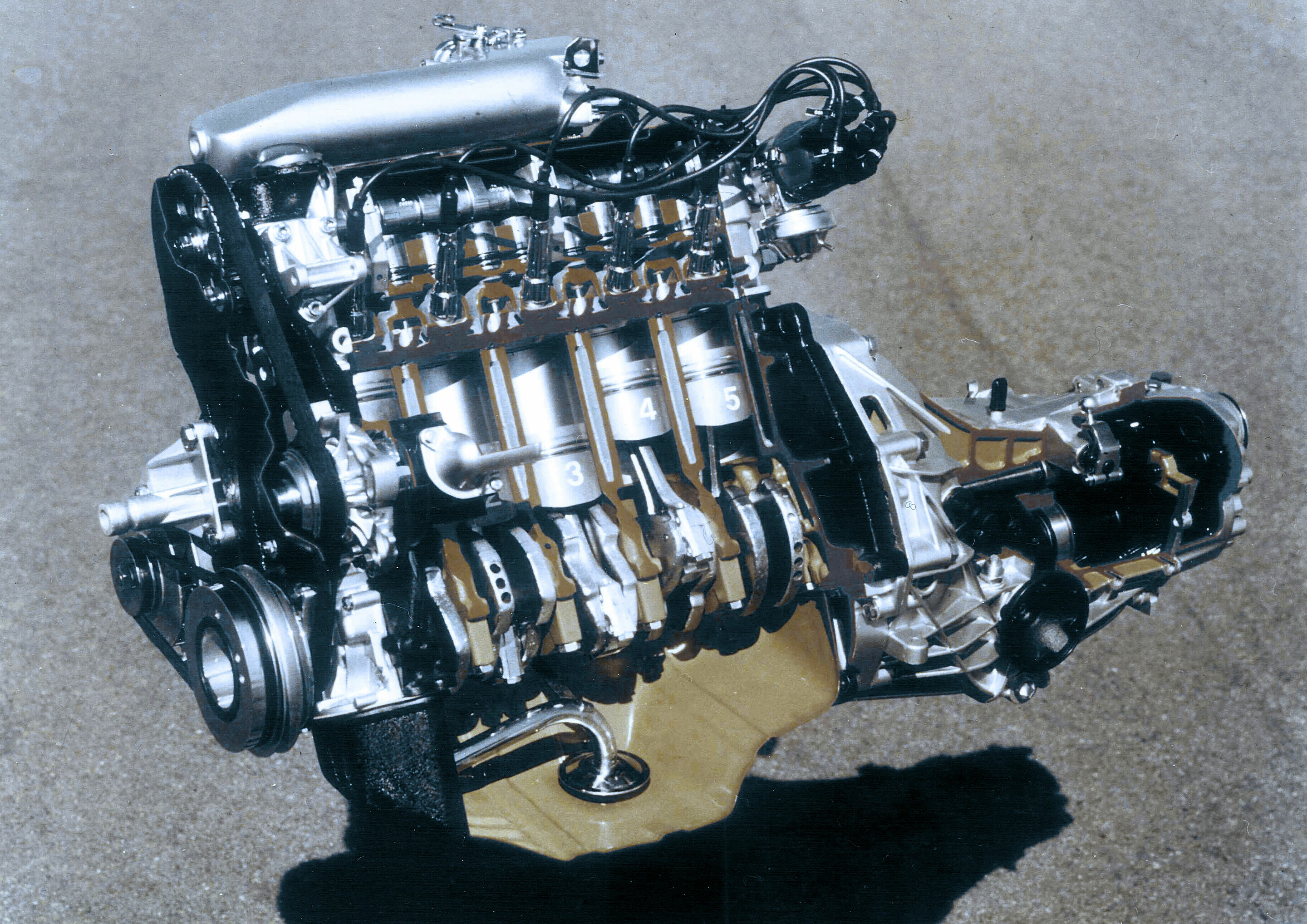History of five-cylinder engines
Back to overviewThe 2.5 liter TFSI engine in the new TT RS is continuing a great tradition: Audi used five-cylinder engines with great success in rally racing back in the 1980s. Today they provide for an emotional driving experience in production vehicles. The powerful and versatile engines have honed the new, sporty profile and made a key contribution to Vorsprung durch Technik. The five-cylinder gasoline engine premiered in 1977 in the Audi 100 5E.
A modern injection system contributed to efficiency and strong power delivery: 100 kW (136 hp) from 2.1 liters of displacement. In 1978, a naturally aspirated diesel engine with a displacement of two liters and 51 kW (70 hp) followed. One year later, the first five-cylinder gasoline engine with turbocharging made its debut – another pioneering achievement from Audi. It powered the new top model, the Audi 200 5T, with an output of 125 kW (170 hp) and 265 Nm (195.5 lb-ft) torque.
One year later, the new engine proved to be even more impressive – in the Audi quattro from 1980. With turbocharging, intercooling and permanent all-wheel drive, it formed a strong technology package for road use and racing. At the start of sales it produced 147 kW (200 hp). The 1984 Sport quattro, which was the basis for a new Group B rally car, was powered by a newly developed four-valve light-alloy engine with 225 kW (306 hp).
In the competition cars for the World Rally Championship, the five-cylinder demonstrated its immense potential, delivering up to 350 kW (476 hp). Even after Audi left rally racing, additional highlights followed: The Audi Sport quattro S1 E2, in which Walter Röhrl won the Pikes Peak Hill Climb (USA) in 1987, produced 440 kW (598 hp). And the IMSA-GTO dominated the American touring car scene in 1989 with a substantial 530 kW (720 hp) – and still from a displacement of little more than two liters.
In series production, Audi used an increasingly differentiated range of five-cylinder engines. The Audi RS2 with 232 kW (315 hp) was launched in 1994. As the Avant with sports car power, it advanced to become the founder of a new class of car.
The engine concept also achieved great success in the diesel sector: The 1989 Audi 100 TDI, a 2.5-liter diesel with direct injecting and 88 kW (120 hp), is a milestone in automotive history.
In the mid-1990s, the new V6 engines gradually replaced the five-cylinders. The comeback followed in 2009 – with turbo charging and direct injection in the Audi TT RS. The transverse engine produced 250 kW (340 hp) from a displacement of 2.5 liters. The TT RS plus that followed in 2013 even achieved 265 kW (360 hp).
The equipment, data and prices specified in this document refer to the model range offered in Germany. Subject to change without notice; errors and omissions excepted.
